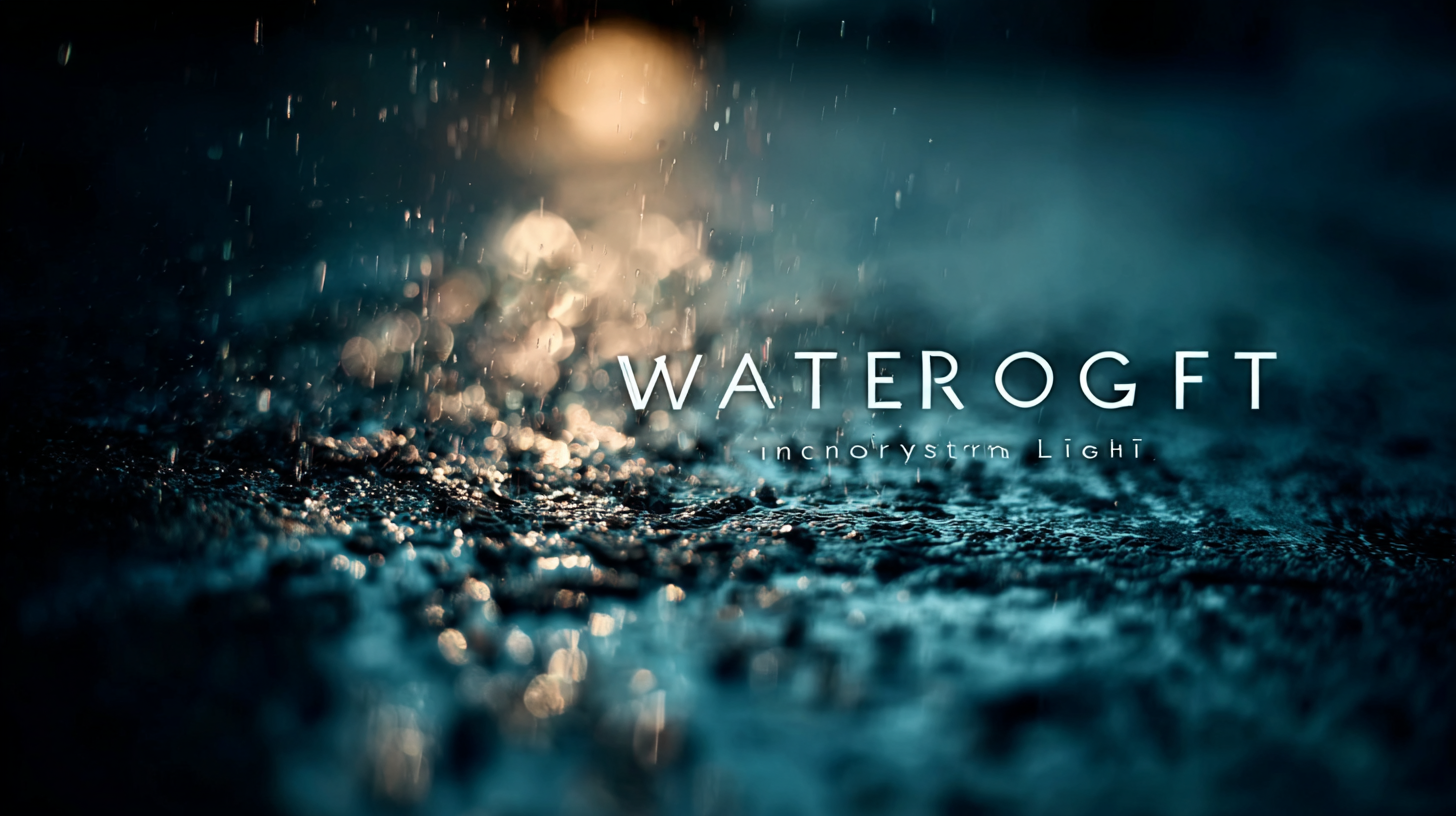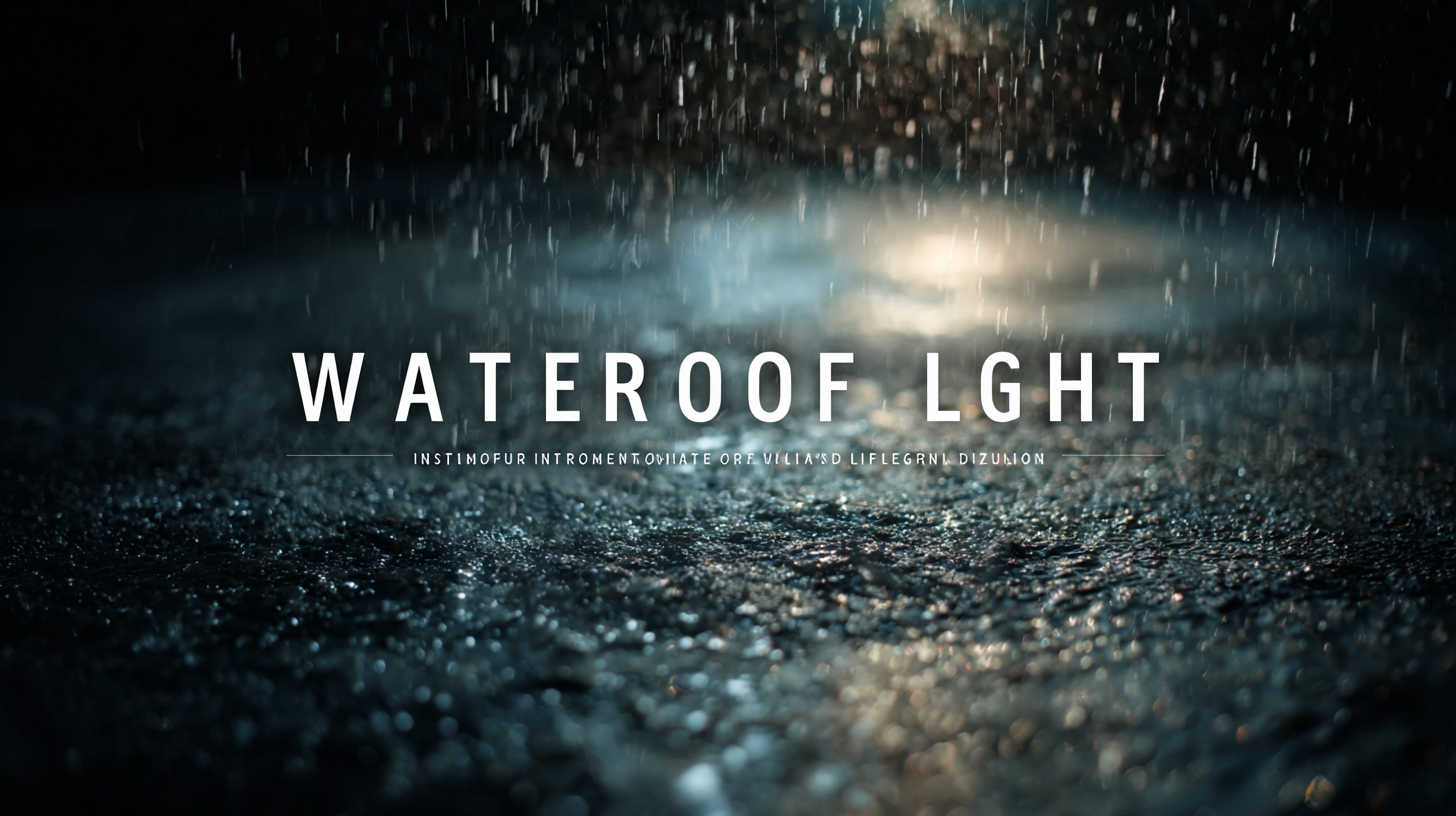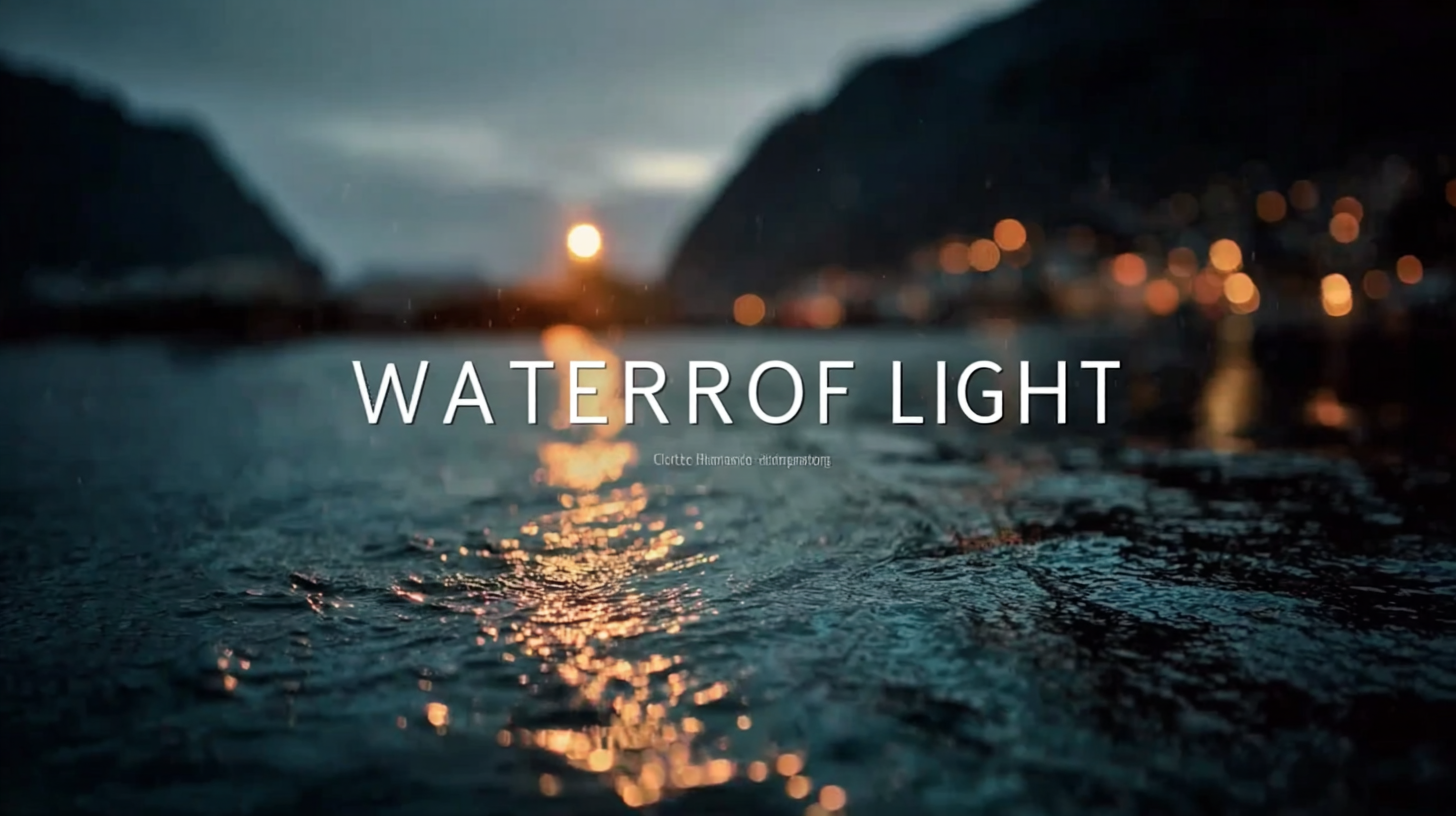
As we look forward to 2025, the advancements in waterproof light technology are set to revolutionize various industries, from outdoor recreation to construction and marine applications. According to the latest industry report by Market Research Future, the global waterproof light market is projected to grow at a CAGR of 7.3% over the next five years, driven by rising demand for durable and weather-resistant lighting solutions. As professionals seek reliable and efficient lighting options, understanding these innovations becomes crucial for informed procurement decisions. This blog will explore cutting-edge developments in waterproof light technology, offering tips and insights that empower buyers to navigate the evolving market landscape and make choices that ensure safety, efficiency, and sustainability.

The waterproof light technology landscape is set to undergo significant transformations by 2025, driven by advancements in materials science and LED technology. One of the most notable innovations is the introduction of improved waterproof ratings, with many products achieving IP68 standards, which ensure complete protection against dust and immersion in water for extended periods. According to a recent report by MarketsandMarkets, the global waterproof lighting market is expected to grow at a CAGR of 7.6%, reaching $6.2 billion by 2025. This growth is primarily fueled by the increasing demand for durable outdoor lighting solutions across residential, commercial, and industrial sectors.
Additionally, the incorporation of smart technology into waterproof lighting systems is a game-changer. As IoT continues to evolve, manufacturers are integrating connectivity features that allow users to control and monitor their lighting through mobile applications. In fact, a study by Grand View Research indicates that smart lighting will account for over 30% of the total lighting market by 2025. This convergence of waterproof technology with smart capabilities not only enhances user convenience but also promotes energy efficiency, aligning with global sustainability goals. As procurement professionals look to invest in these innovative solutions, understanding these key trends will be crucial for making informed decisions in the coming years.

When assessing the performance and durability of waterproof lighting solutions, it’s crucial to consider several key factors. The first aspect to evaluate is the IP (Ingress Protection) rating. A higher IP rating indicates better protection against water and dust, making it essential for environments exposed to harsh weather conditions. For instance, lights with an IP68 rating are suitable for prolonged submersion, while those with IP65 can withstand water jets. Understanding these ratings can help you select the right product for your specific needs.
Another critical element is the material used in the construction of the lighting fixture. Corrosion-resistant materials like stainless steel and high-grade plastics not only enhance durability but also prolong the lifespan of the lighting solution. When selecting products, look for features that resist UV degradation and harsh chemicals, especially if installed outdoors.
Tips: Always ask for performance tests or testimonials from manufacturers, as real-world applications can reveal much about a product's reliability. Additionally, consider energy efficiency and maintenance requirements; opting for LED options can lead to significant long-term savings and reduced upkeep, making them a smart choice for your procurement decisions.
When it comes to procuring waterproof light technology in 2025, several factors should influence decision-making. First and foremost is the performance and durability of the lights themselves. Buyers must consider the materials used in construction, as well as the ratings against water ingress. Products with higher IP ratings indicate better protection against water, which is crucial for outdoor or marine applications. Testing reviews and certifications also play a significant role in assessing quality; endorsements from recognized safety standards can enhance credibility.
Another pivotal factor is energy efficiency. As sustainability becomes increasingly imperative, procurement decisions should focus on products that maximize luminosity while minimizing energy consumption. Analyzing the lifespan of light fixtures—to avoid frequent replacements—can further bolster organizational goals for sustainability.
Moreover, compatibility with smart technology can provide advanced features such as remote control and diagnostic capabilities, making it easier to maintain these systems. Each of these factors contributes not only to the performance of waterproof lights but also affects the overall cost of ownership, guiding informed procurement strategies.
When it comes to investing in waterproof lighting technology, selecting the right manufacturer in China is crucial for ensuring product quality and reliability. Evaluating supplier credentials involves thorough research and direct communication. Look for manufacturers with a proven track record in the industry and certified products that meet international standards. Engaging with a supplier who understands the intricacies of waterproofing will help mitigate risks associated with subpar products.
**Tip:** Always request samples before making large orders. This allows you to assess the quality and performance of the products firsthand. Additionally, visiting the manufacturer's facility can provide valuable insights into their production processes and quality control measures.
Furthermore, consider the supplier's customer support and after-sales services. A reliable manufacturer will not only offer good warranties but also be responsive to your inquiries and concerns. This can save you significant headaches in the long run, especially when managing procurement logistics.
**Tip:** Screen potential suppliers for customer reviews and testimonials. Online platforms and trade shows can be excellent sources of information, helping you narrow down your choices to those who have consistently delivered satisfactory results.
As the demand for waterproof lighting systems continues to rise, various industries have successfully implemented innovative solutions that enhance both functionality and safety. For instance, a leading outdoor recreation company integrated waterproof LED lights into their camping gear, creating a reliable source of illumination that withstands the elements. This case study highlights not just the importance of durability but also the need for energy efficiency, as these lights helped reduce reliance on traditional power sources, aligning with sustainability goals.
Another compelling example comes from an urban development project where waterproof lighting was installed along waterfront promenades. These systems not only enhanced the aesthetic appeal of the area but also improved night-time visibility and safety for pedestrians. The technology used in these lights was carefully selected based on performance metrics and end-user feedback, showcasing the significance of thorough research in the procurement process. By analyzing such successful implementations, organizations can better understand how to approach their own waterproof lighting decisions, ensuring they choose solutions that are effective, efficient, and environmentally friendly.

